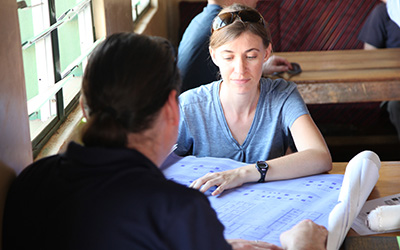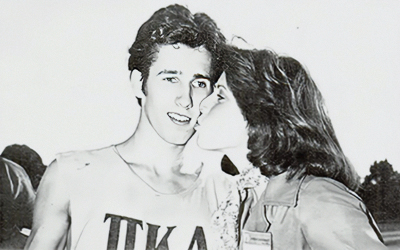A century before high-rise apartments and Chick fil-A, boarding houses fed and housed Auburn’s hungry students
By Sam Hendrix ’97
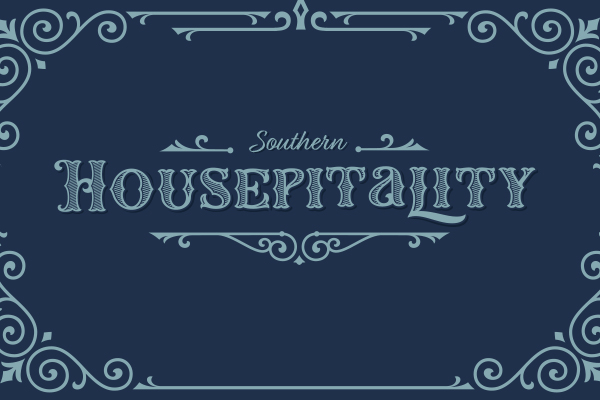
Half a century later, Clay Nordan ’71 remembers the look on their sweaty faces.
Walk-on football players were dragging themselves into Land’s Dining Hall, in back of H&A Dorm on West Magnolia. Late on a warm spring afternoon in 1968, the players had finished a bruising session on Coach “Shug” Jordan’s practice field. They were famished. Parched. Their expressions told of a singular purpose.
“They took seats at a table, and before even thinking about food, they each downed a pitcher of tea,” Nordan remembered. “Then, like everybody else, they got their single serving of meat, but they also hit the bowls of vegetables. They’d finish a bowl of beans or peas and potatoes, then have one refill after another of unlimited vegetable servings. I’d never seen anybody eat like that.”
Nordan probably learned from his API graduate father, Clay Nordan ’39, that boarding houses and dining halls represented an Auburn tradition that predated the institution, and lasted until abundant dormitories and apartment complexes rendered them obsolete. His lodging space, H&A, had no food hall built in but offered meal plans through Land’s next door.
“Good country cooking. My brothers and sisters and I worked in the dining room at mealtime, filling and refilling bowls of vegetables and cleaning up.”



“Old Mr. Land and his wife opened this place after he got out of the Navy,” Nordan said. “It had the feel of a bingo hall. Mr. Land would sit by the front door, chomping on his cigar. His wife did a lot of the work. They had some local Black ladies—wonderful cooks— working the kitchen. They made sweet tea in garbage cans—the best tea you ever had. They had benches and chairs for you as you waited for a table. Only when eight people were ready would Mr. Land seat you. And only after the food was on the table.”
Nordan remembers the magic words: “Next eight!” Mr. Land would growl, leading hungry college boys to the promised land.
“I was a beanpole when I came to Auburn in summer 1967,” Nordan said. “Because of the quantity and quality of the food, I put on a few pounds. I had a lunch-and-supper meal plan that first year, and I don’t remember the cost, but it was reasonable.”
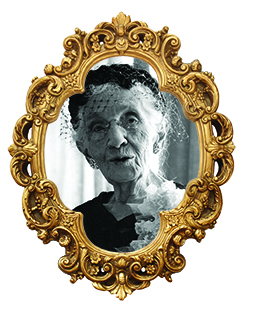
Leila Terrell
Auburn’s first institutions of higher education—the Masonic Female College and East Alabama Male College, at either end of the 1850s—each advised students to seek lodging with local families as neither school had boarding facilities. Within a generation, Auburn’s first boarding houses became the most common form of lodging for out-of-town students until API began building residence halls and private developers began opening apartment complexes. Dorms—beginning with O. D. Smith Hall in 1908 and continuing with the Quad Dorms’ arrival in two phases in the late 1930s and the early 1950s—and private apartments gradually spelled the end for boarding houses.
But for decades, many students counted on living in multiple-student dwellings and taking meals either in those locations or in purpose-run dining halls. Boarding houses were often run by widows, whose experience in managing a household fit with their need for staying home with young children while supporting themselves. These houses brought into close proximity student roommates and neighbors who often did not know each other before arriving. Living, studying and eating with other students meant people were not strangers for long. This cemented relationships and led to a close-knit student body. Is it any wonder an Auburn Spirit developed among early cadets?
While these establishments have, for the most part, vanished from town, the spirit of cooperation they fostered between landlords and college representatives has been preserved.
“The shared experience of caring for students established a bond between faculty and boarding house operators that served as a foundation for the cooperative town-campus relationship that continues to exist today,” suggested Carole Zugazaga, chair of the Department of Sociology, Anthropology and Social Work in Auburn’s College of Liberal Arts.
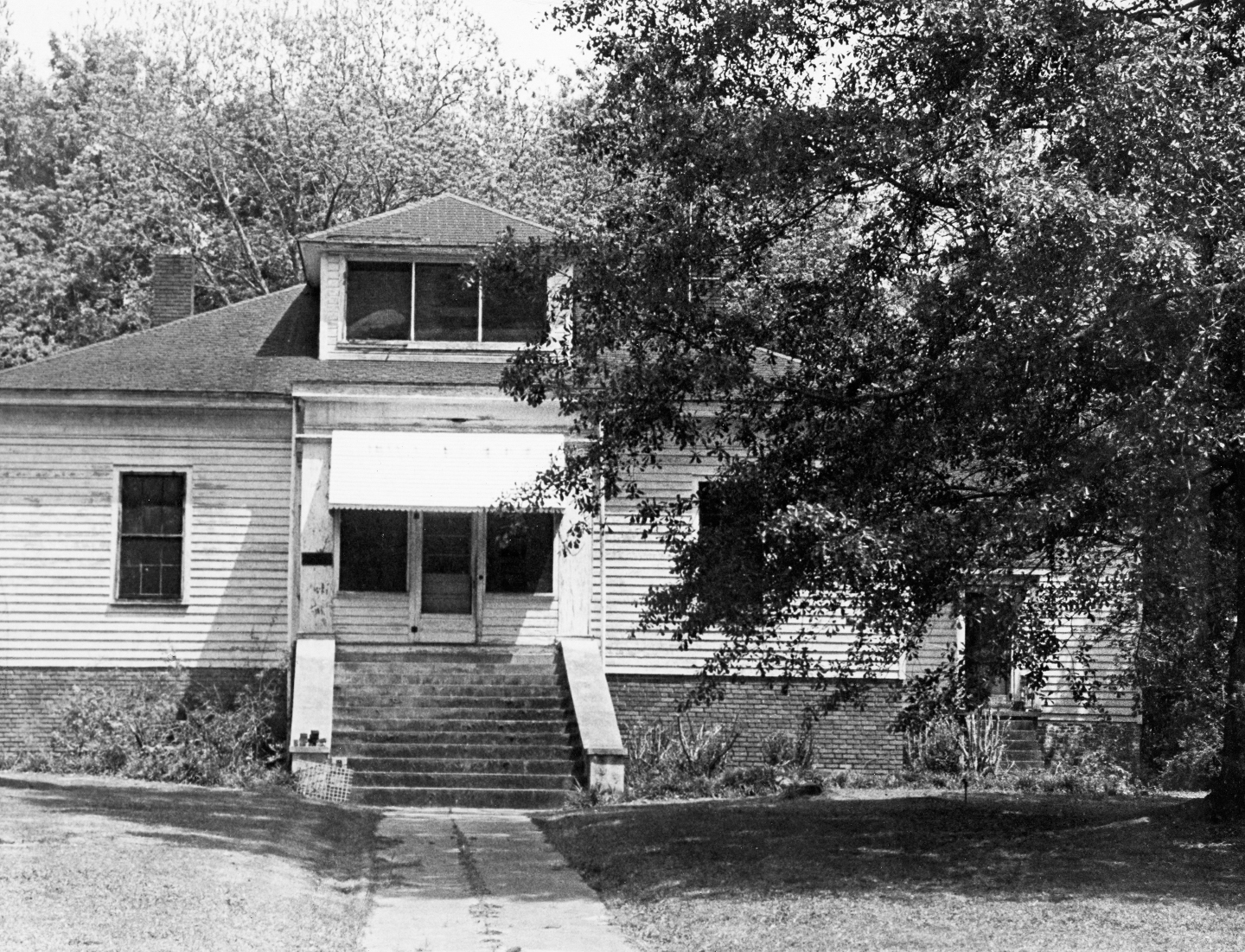
Scott Yarbrough House
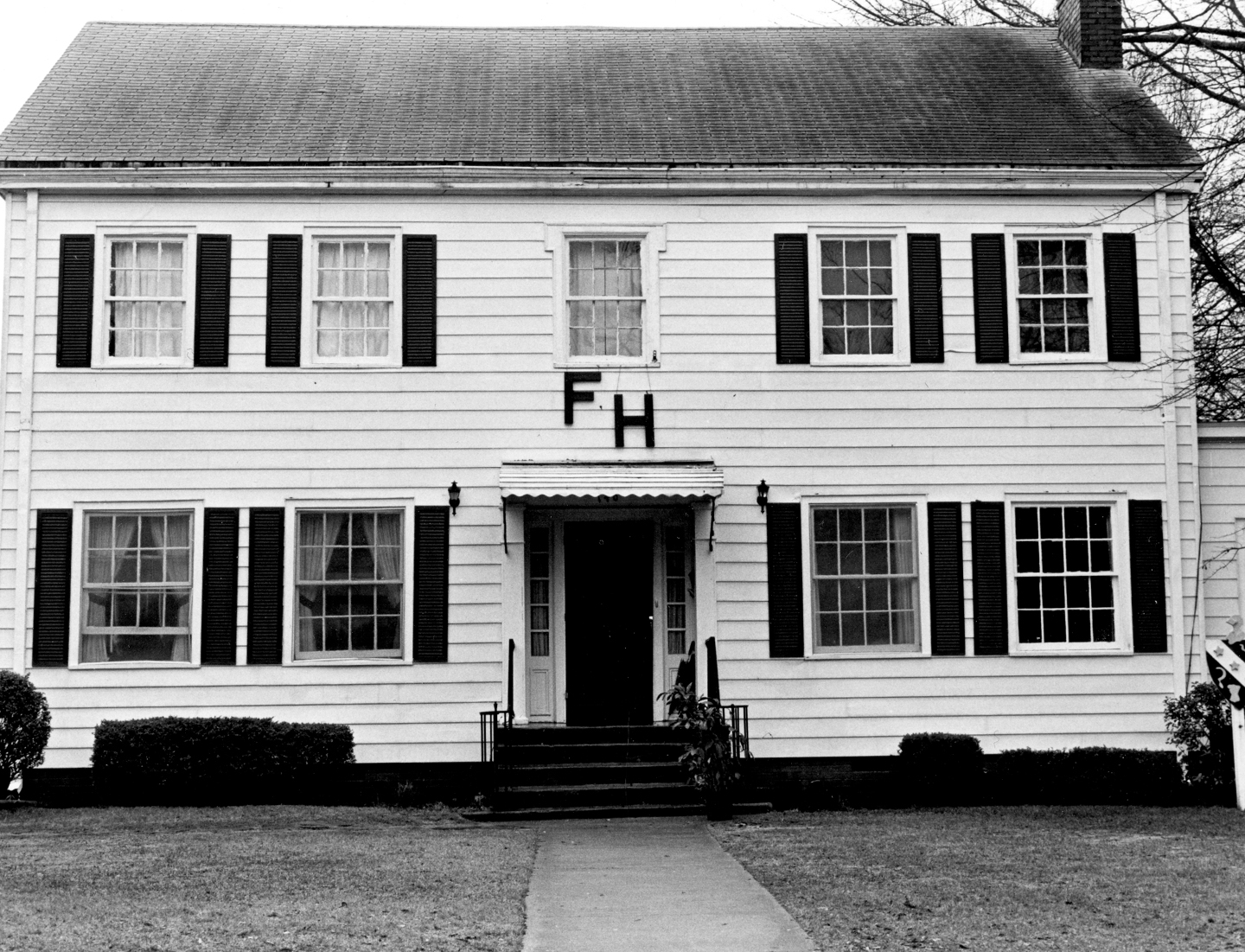
McAlister Boarding House
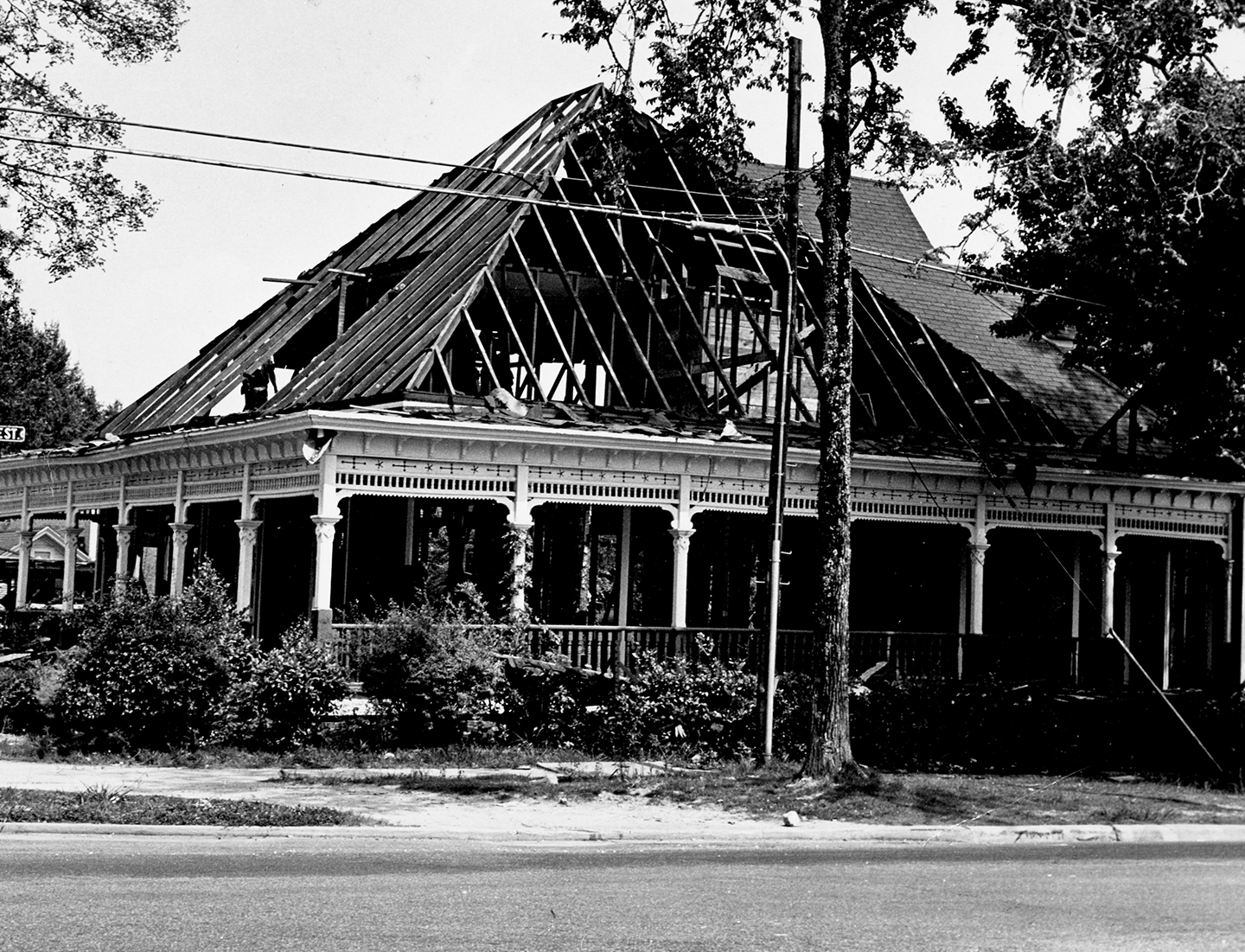
Green House
Masonic Female College Trustee Nathaniel J. Scott built his sizable home in 1847 on a rise a short walk east of where the Masonic campus would soon locate, at the northeast corner of today’s Gay Street and Magnolia Avenue. Early enrollees who came from outside Auburn likely lived at the Scotts’ home, which today serves as headquarters of the Carolyn Marshall Draughon Center for the Arts and Humanities on DeBardeleben Street. In the twentieth century’s middle years, this house was owned by physician and several-times Auburn Mayor Dr. Cecil Yarbrough, who also rented rooms to API boarders over many years.
Early veterinary students, studying under Charles Allen Cary, lived in the Cary home at 360 North College. At least they did for the first decade of the 20th century, taking meals in the first-floor dining room and sleeping in bunk space Cary allotted in the attic. The Carys had children at home in those years, and when veterinary boys would raise a racket after bedtime, Dr. or Mrs. Cary would rattle the ceiling with a broom to quieten their lodgers.
By 1909, Mrs. Cary had suffered enough late-night chatter. At her request, Dean Cary built a house next door. “Cary Castle” became Auburn’s first private dormitory. It’s still owned by the family and still boards Auburn students today. The famous story about this place is that Dr. Cary stopped by during the final stages of construction one September day, climbed a ladder to the roof and found a worker off-task. Cary kicked at the man, lost his balance and fell, landing inches from the trough where mortar was being mixed. He broke his leg and suffered shoulder and facial injuries. His opinion on the quality of local physicians was not recorded, but he asked his chief veterinary lieutenant, Dr. I. S. McAdory, to set his leg. Dr. Cary walked with a limp for over his remaining quarter-century.
Boarding houses could be found along practically every street near campus by the early years of the 20th century. Pebble Hill on DeBardeleben, Cary House, Cary Castle, and long ago math professor Bolling Crenshaw’s 1890 home—now the Crenshaw Guest House across North College Street from the Carys—served as boarding houses and are still standing. Another former boarding house still standing—at 140 Toomer Street—is the former home of Farmhouse Fraternity. Before Farmhouse moved in, it was the McAlister Boarding House. Henry and Frances McAlister purchased this existing boarding house in 1957. Henry died in 1978, and Frances continued running the boarding house until she made arrangements with Farmhouse. She stayed on as house mother for a time.
“Mom and Dad and us six kids moved in when we bought the house,” remembered Bill McAlister ’71. “We boarded downstairs, and the college guys lived upstairs and in three or four smaller dormitories Dad had built in back of the house.” McAlister remembered his mother—with assistance from three or four local ladies—cooking for 150 boys most days at lunch and dinner.
“Good country cooking,” he recalled. “My brothers and sisters and I worked in the dining room at mealtime, filling and refilling bowls of vegetables and cleaning up.”
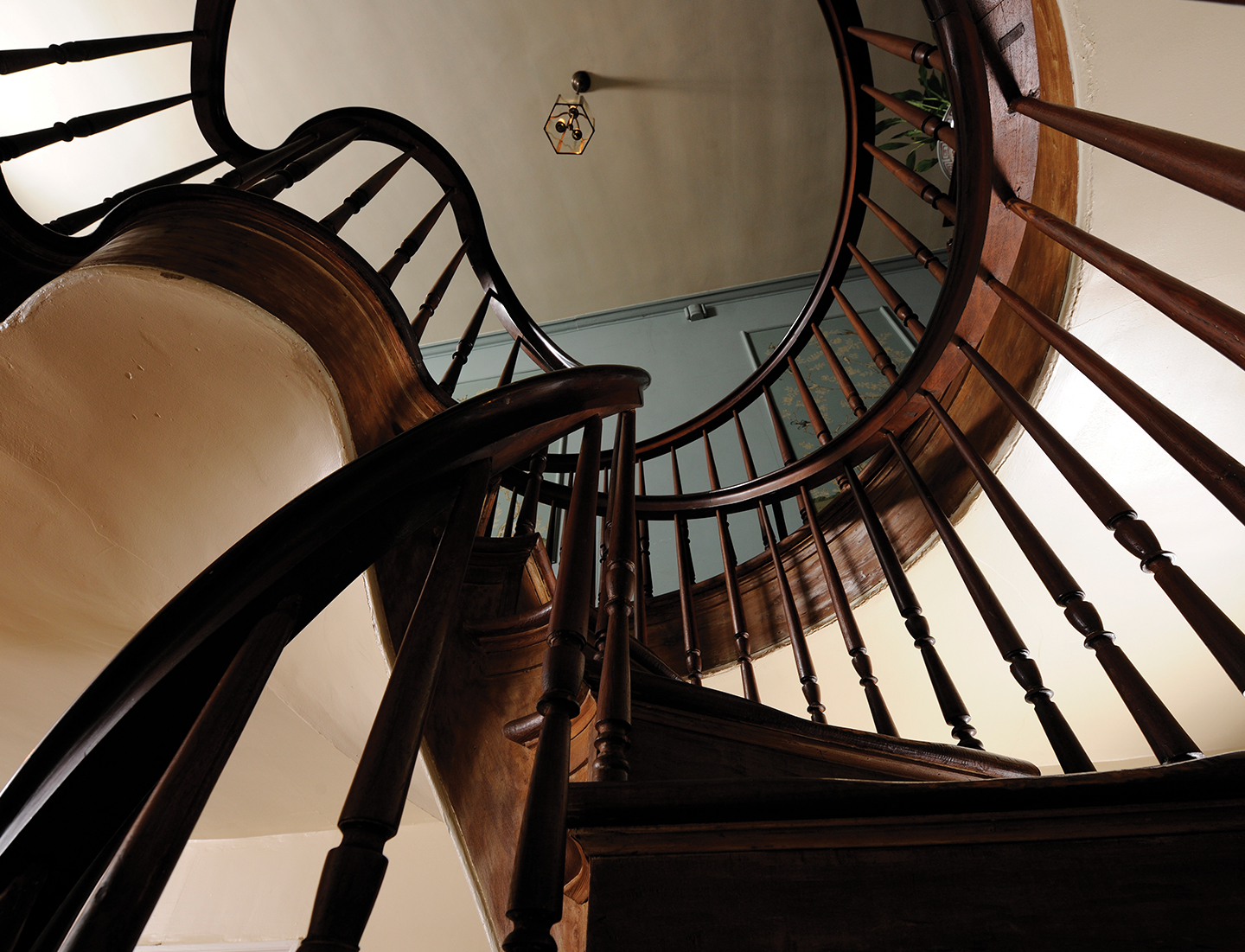
A spiral staircase at the Halliday Cary Pick House.
Many old Auburn boarding houses, of course, are gone. Bessie Bailey’s—where Nichols ROTC Building now sits—was one. Mrs. Bailey was widowed when she came from her 40-acre farm in Hartselle, Ala. in 1938. She brought her children, belongings and enough canned vegetables from the family garden to open a boarding house. Lodgers’ fees helped Mrs. Bailey’s children, including son Wilford, get an API education. Mrs. Bailey’s boarding house operated swimmingly, at least until lightning during a ferocious thunderstorm struck and killed the cow. That event led to a big barbecue, but it’s not clear whether boarders partook. Mrs. Bailey later worked for years as the university’s chief phone operator from the basement of Samford Hall. Wilford, meanwhile, went on to graduate veterinary medicine in 1942 and to hold every office in the Veterinary College except that of dean. He served as the university’s 13th president between the administrations of Hanley Funderburk and James E. Martin as well as a term as president of the NCAA.
The Green House is also gone. It sat at the corner of Thach and South College and was, for years, home of legendary college and city physician John Hodges Drake III. In the years after Drake’s death, this house served as a boarding house, and Auburn native John Williams ’74, who taught English at LaGrange College, remembered the Green House as the first stop on his midday newspaper route in the mid-1960s.
“I can still smell that noontime cooking aroma,” he said. Jack’s Hamburgers, Auburn’s first chain fast-food restaurant, came to this location in fall 1965, but the aroma was never the same.
Perhaps no Auburn boarding house received a more widespread sendoff than the house at 112 East Magnolia Avenue. That house sat on the approximate location of one constructed by famous old Auburn widow Gatsy Rice, who was born a slave and—through her ingenuity, work ethic and sense of business— became one of the more prosperous women in 19th-century Auburn. Gatsy Rice gained freedom after the Civil War, earned a living by mending torn cadet uniforms, and then got involved in real estate.
She built a house at 112 East Magnolia and ran it as a boarding house before she died in 1895. Either that house—immediately east of the later-founded First National Bank—or a successor structure at the same location had a string of owners before “Miss Cora” Hardy bought it in 1920 and began a run of 32 years as a popular boarding house owner. Miss Cora fed varsity API football players for years, and after she sold the place to J. M. Tant in the early 1950s, it served one more round of students before First National Bank needed the space for parking. When the building was torn down, state and regional newspapers told the sad story of this landmark’s demise. While Miss Cora’s earned a solid reputation, no Auburn boarding house was more beloved than the one owned and operated for more than 40 years by Leila Terrell, who came to Auburn in 1902 as a widow with three young children. Mrs. Terrell’s Boarding House stood at 311 North Gay, at the intersection with Mitcham Avenue across from the train depot.
Leila Terrell had to consult a neighbor on the fine art of making rice, but once she got that and other recipes down, she fed entire fraternity chapters at a sitting, as many as 60 boys each meal. Local historians have estimated that more than 1,000 Auburn boys lived under “Ma” Terrell’s roof over her years of boarding. Many returned to see her time and again after their Auburn days had ended. They’d bring candy, bath powder or other gifts at Christmas and on her birthday. One year, on Valentine’s Day, an admiring boarder solidified his place at the table with a card which read, “If you were seven, and I were nine, I’d ask you to be My Valentine.”
Auburn University trustees acknowledged Mrs. Terrell’s contributions to boarding and feeding students when, in 1970, they named the Hill Dorms’ dining hall for her. She died that fall at 104, and her old boarding house was demolished in 1973 to make way for a succession of banks. None of Mrs. Terrell’s boys ever renamed her house, but Gail Langley ’69 remembered some of her family’s boarders adopting a new name for what they had called the Rutland House. This stood at the southeast corner of Thach and Payne and had earlier been the home of API English professor and librarian James Rutland.
“One year, one of the boys decided he’d rename the Rutland House, and he chose a Greek letter scheme. He put the letters for Sigma Epsilon Chi up on the front of the house. Mother didn’t think anything about it, but when our friend Ralph Draughon called us and told us to think about what those Greek letters spelled out, then she drew the line.” Sigma Epsilon Chi would appear thus: ΣΕΧ.
Southern Tea Cakes Recipe
by Ann Cipperly
Ingredients
1 cup (2 sticks) butter, softened
1 cup sugar
2 eggs
1 tsp. vanilla extract
½ tsp. baking powder
3 cups (about) all-purpose flour
Beat butter and sugar in a
mixing bowl until light and
fluffy. Add eggs and vanilla
and beat well. Stir in baking
powder and enough flour to
form a stiff dough. The dough
will be sticky.
Roll into a circle on waxed
paper. Cut into circles with
a round cookie cutter. Lift
each circle with a spatula and
arrange on a greased cookie
sheet. Bake at 375 degrees for
10 minutes. Remove to a wire
rack to cool. Makes 3 dozen.
Building Hope: Disaster Relief Architecture & Design
Combining faith and design, disaster response architect Sarah Elizabeth Dunn ’03 builds shelters for disaster-stricken communities around the world.
Harold Franklin Reflects on Integration 50 Years Later
Fifty years ago, unsure of his safety, a tall, soft-spoken Black man walked alone across the Auburn campus to register for classes.
Auburn Love Stories: How They Met
From blind dates to football games to chance meetings in the classroom, Auburn alums reflect on how they found love and everlasting romance on the Plains.
Building Hope: Disaster Relief Architecture & Design
Combining faith and design, disaster response architect Sarah Elizabeth Dunn ’03 builds shelters for disaster-stricken communities around the world.
Harold Franklin Reflects on Integration 50 Years Later
Fifty years ago, unsure of his safety, a tall, soft-spoken Black man walked alone across the Auburn campus to register for classes.
Auburn Love Stories: How They Met
From blind dates to football games to chance meetings in the classroom, Auburn alums reflect on how they found love and everlasting romance on the Plains.
